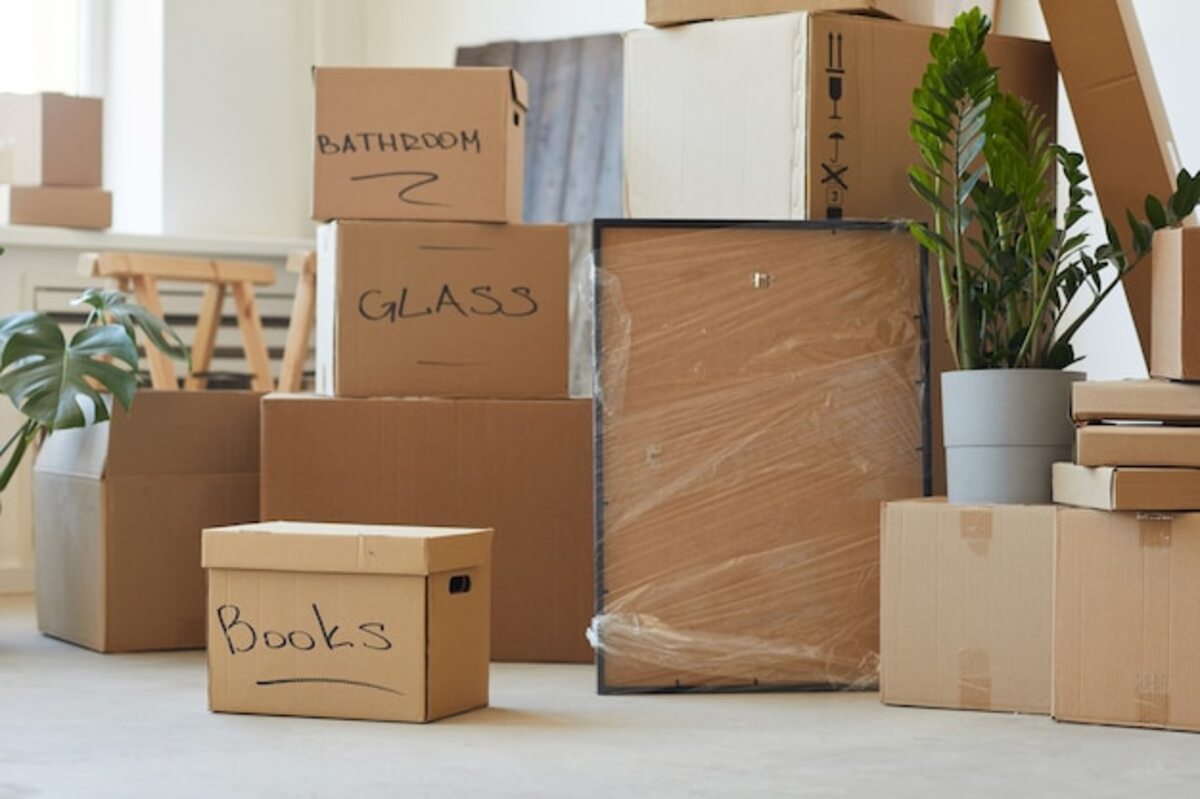Tips for establishing an effective moving routine

Establishing an effective moving routine is essential to prevent this process from becoming chaotic. With proper planning, you can minimize stress and ensure that every detail is taken care of. In this article, we will share practical tips to help you get organized, from choosing the perfect day to labeling boxes. Get ready to enjoy a smooth and guaranteed successful move!
1. Define your moving date: Choosing the ideal time
Defining the moving date is one of the most crucial steps in the process of relocating to a new home. Choosing the ideal time can make the difference between a smooth experience and a real challenge. Consider factors such as your job, personal commitments, and weather conditions. For example, if you have work flexibility, you might opt to move mid-week, when moving companies tend to have less demand and can offer you better rates and more availability. Additionally, avoid peak months of the year, such as summer or the end of the month, when congestion can cause unexpected delays.
Once you have considered these aspects, it is also essential to communicate your chosen date to all parties involved: family, friends who will help you, and service providers. Make sure to book any necessary services in advance to avoid unpleasant surprises. Remember that planning ahead not only allows you to choose the best possible day, but also gives you room to organize all the logistical details related to the move. This way, you can enjoy the process without feeling overwhelmed by the proximity of the event.
2. Create a detailed schedule: Plan each stage.
To ensure a smooth move, it is essential to create a detailed schedule that covers every stage of the process. Start by breaking the move down into specific tasks, such as packing rooms, notifying utilities, and coordinating transportation. Assign realistic deadlines for each task, considering the time needed to complete them without rushing. For example, you might dedicate a whole week to packing the kitchen and another to the common areas. This approach will not only help you stay organized but also allow you to assess your progress and make adjustments if necessary.
In addition to setting deadlines, it is advisable to prioritize tasks according to their urgency and importance. Some activities should be done well in advance, such as hiring a moving company or managing the change of address with postal services and essential utilities. Including reminders in your calendar or using planning apps can be very helpful to keep track of what needs to be done at each moment. By the end of the process, you will have a clear map that will guide your actions and provide you with peace of mind throughout the moving experience.
3. Take inventory: What you bring and what you leave.
Making a thorough inventory of your belongings is one of the most critical stages in the moving process. Before packing, take the necessary time to go through each room and make a detailed list of what you plan to take with you to your new home. This will not only help you get a clear idea of the number of boxes you'll need but will also allow you to identify items that you no longer use or that are in poor condition. In the end, you can decide whether they should be donated, sold, or discarded, thus facilitating a more organized and less overwhelming move.
Additionally, having an inventory will provide you with peace of mind during the move. Upon arriving at your new home, you will be able to quickly verify if all your belongings have been transported correctly. An effective technique is to take photos of the most valuable or fragile items before packing them; this will serve as proof in case of damage or loss during the transfer. Remember to update your list as you progress through the process and make sure to keep it accessible so you can consult it quickly when needed. With a well-structured inventory, you will be taking a significant step towards a successful and hassle-free move.
4. Organize your belongings: Strategies for sorting
Organizing your belongings is one of the most crucial steps in any move. To start, it's helpful to make an inventory of all your things. Go through each room and note what you have, prioritizing the items that you truly use and value. Once you have a complete list, you can categorize your belongings into three categories: keep, donate/sell, and discard. This strategy will not only help you reduce the amount of stuff you need to transport, but it will also allow you to start your new life with a more organized space free of unnecessary items.
Once you have decided what to keep, it's time to organize those belongings efficiently. Use labeled boxes to group similar items; for example, books with books, kitchen utensils with kitchen utensils. Don't forget to include clear labels on each box, indicating its contents and the room they belong to in your new home. Additionally, consider using systems like the Marie Kondo method or the four-box system (keep, donate, discard, and repair) to make the process even easier. With good sorting and labeling, your move will become much more manageable and less stressful when you arrive at your new space.
5. Get suitable materials: Boxes and necessary supplies
To carry out an effective move, it is essential to have suitable materials that facilitate the packing and organizing process. Boxes are one of the most important elements; make sure to have different sizes to accommodate the variety of items you will be transporting. Opt for sturdy boxes, preferably made of corrugated cardboard, that can withstand the weight and protect your belongings during transit. Additionally, do not underestimate the importance of other supplies such as adhesive tape, bubble wrap, or newspaper to wrap fragile items, and labels to easily identify each box.
It is also useful to consider buying permanent markers in vibrant colors to categorize the boxes according to the rooms they belong to. This will not only help you stay organized during loading and unloading, but it will also allow those who assist you with the move to know exactly where each item should go. Remember to also include plastic bags or small containers for loose items like screws or accessories; this will prevent any loss and make assembly easier once you arrive at your new home. With these well-chosen and organized materials, you will be one step closer to achieving a hassle-free move.
6. Hire professionals or do it yourself: Pros and cons
When planning your move, one of the most important decisions is whether to hire professionals or to carry out the process yourself. Hiring a moving company can provide you with the peace of mind you need, as these experts have the experience and proper tools to handle your belongings with care. Additionally, by leaving the work in their hands, you can dedicate time to other aspects of the move, such as organizing the new home or managing necessary paperwork. However, this service often comes with a significant cost that could affect your budget. On the other hand, opting to do the move yourself can result in considerable savings and gives you greater control over the process. If you decide to go this route, it is essential to be well prepared and to have the help of friends or family to ensure everything goes smoothly. However, you must consider factors such as the time you will need and the physical effort involved. Lack of experience can lead to damage to your belongings or even accidents during the move. So carefully evaluate your options and decide which best fits your needs and circumstances before making a final decision.
7. Label your boxes: Effective methods to identify contents
Labeling your boxes is one of the keys to an organized and stress-free move. By doing so, you not only make the unpacking process in your new home easier, but you also save time and energy by knowing exactly where your belongings are. Use a color-coding system or keywords to help you quickly identify the contents of each box. For example, you can use green labels for the kitchen, red for the living room, and blue for the bedrooms. This will give you a clear overview while you organize your things.
In addition to using color codes, it is advisable to include a brief list of the contents in each box. This can be as simple as noting "books" or "winter clothes," but it will help you remember what is inside without having to open each box. Consider using sturdy adhesive labels or even decorative washi tape to make the process more visual and appealing. Remember that good labeling not only speeds up unpacking but also reduces the chance of losing important items during the move. With these effective methods, you can enjoy your new space without unpleasant surprises while searching for your essential belongings.
8. Notify address changes: Avoid surprises in your correspondence.
Notifying address changes is a crucial step that is often overlooked during the moving process. Once you have confirmed your new residence, it is essential to inform all relevant institutions and individuals about your address change. This includes, but is not limited to, banks, utilities, internet providers, and postal services. By doing so, you will avoid unpleasant surprises such as the loss of important mail or the interruption of essential services in your new home. Take the necessary time to create a list of all the contacts you need to notify and make sure to do it in advance.
Additionally, consider using online services that facilitate this process. Many entities allow you to notify them of your change of address through their digital platforms, which can save you time and effort. Don't forget to update your address on your social media and other online profiles where it's relevant. This will not only help you stay connected with friends and family, but also ensure that you receive important information related to local events or activities in your new area. A few minutes spent notifying your change can prevent future issues and contribute to a smoother transition to your new home.
9. Settle into your new home: Tips for a quick and comfortable setup
Setting up your new home involves more than just unpacking boxes; it’s about creating an environment where you feel comfortable and at ease. To achieve a quick and comfortable setup, start by prioritizing the rooms you will use most often, such as the kitchen and the bedroom. Unpacking essential items first, like kitchen utensils, bedding, and personal hygiene items, will help you adjust quickly to your new space without feeling overwhelmed. Additionally, make sure you have a plan to organize your belongings as you take them out of the boxes: grouping similar items will simplify the process and prevent initial clutter.
Another key piece of advice for a successful setup is to personalize your space from the start. Once you have unpacked the essentials, take time to decorate according to your tastes and preferences. Placing family photos on the walls or adding plants can make your new house feel cozier and less impersonal. Don’t forget to set up basic services like internet and electricity before moving in; this will make the process much smoother. At the end of the day, remember to take a moment to relax in your new home; enjoying the newly established space can help process all the emotions related to the move and mark the beginning of this new chapter in your life.



